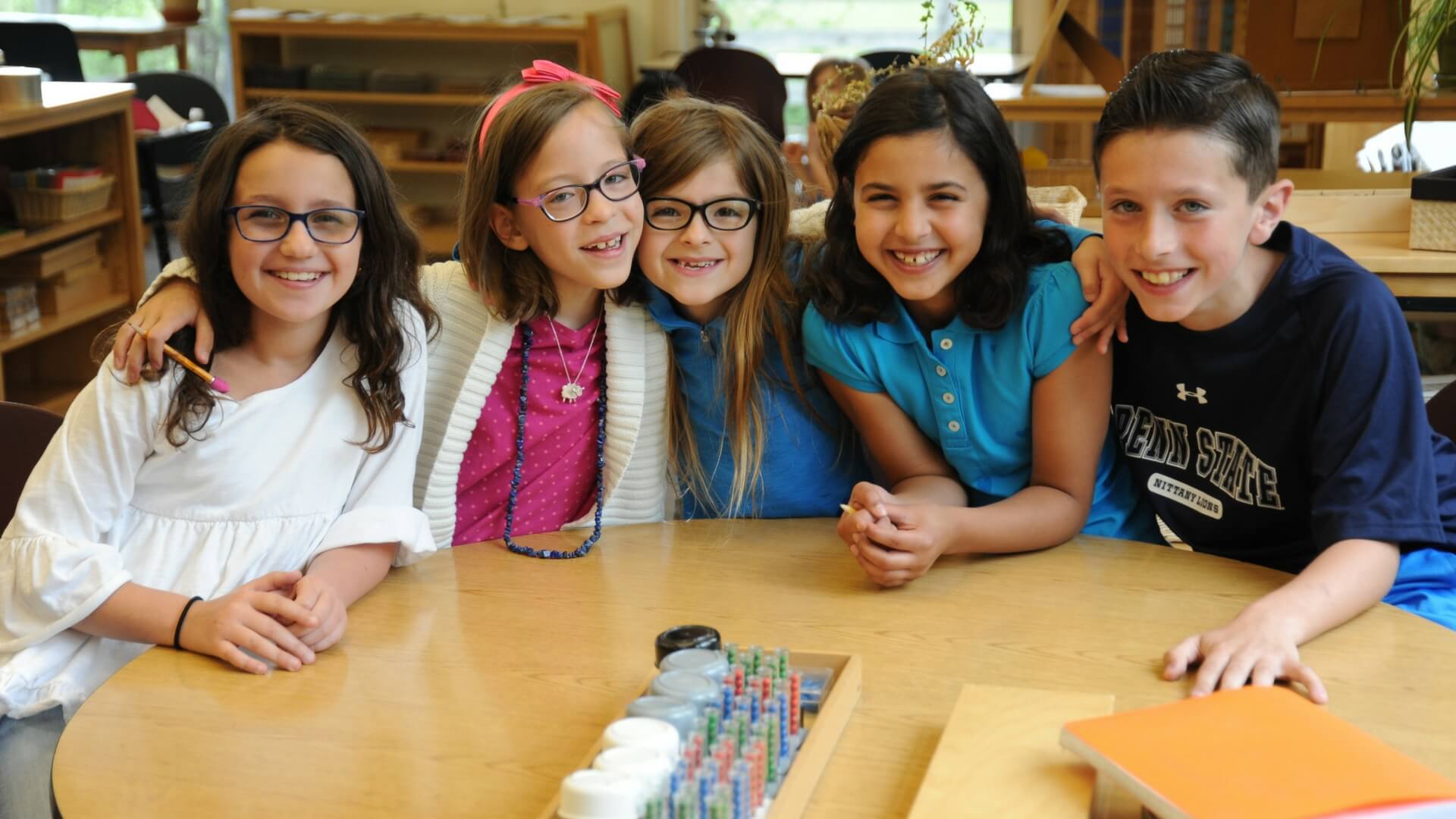Just as the Montessori classroom allows ample practice for the physical skills children will need to master holding a pencil, we also offer practice for the discernment skills children will need to remember and replicate the shapes of letters. Throughout the classroom, integrated into lessons across the curriculum, you’ll find opportunities for children to develop the hand-eye coordination, the fine motor control, and the visual discrimination they’ll need when they first begin to write.
And we know that interest in writing happens early. Watching their parents, teachers and other loved ones writing all theme, children want to put their own pencils to paper, mimicking the curving lines on the page they see around them (even before they are able to tell one letter from another.) We respond to this by offering open ended opportunities to create marks on paper, like painting at the large easel or coloring with crayons. But you’ll also notice opportunities for children to practice the specific movements of the hand they’ll need to perfect the formation of letters.
First, you may see children exploring materials that refine their tactile sense, maintaining a sensitivity in their hands and fingers that will help them as they begin to compare the differences between the formation of similar letters. Comparing fabric squares or organizing the Touch Boards help children to discern subtle differences in sensations, the same they’ll need to control the fragile movements of a pencil nib along paper. These activities may not initially appear to be related to writing, but you can consider them part of the cumulative list of skills children need to establish to be able to hold and control a pencil with ease. Just as Carrot Cutting relies on the child knowing how to carry a tray, use a sponge, and transfer objects between containers, writing relies on the child’s ability to coordinate the thirty-four different muscles that move the fingers and thumb and the seventeen additional muscles in the palm of the hand.
Children will learn the shapes of each letter through the Sandpaper Letters, stroking their fingers along the rough sand while they say the sound of the letter. This practice links the sound of the letter to the movement one’s hand completes when writing it. It’s less important that children know the names of the letters than that they are able to identify their sounds and shapes. Indeed, many early childhood classrooms avoid referring to the names of the alphabet letters until children are already reading. By spending extended time practicing the shapes and sounds in combination, children have a head-start on writing letters and building words. In many classrooms, you’ll see cursive letters. While this may seem unusual for adults, who often didn’t learn cursive until later in Elementary school, the flowing lines of cursive letters match easily the natural movements of children’s hands. Other classrooms may use print shapes, reinforcing the shapes children will translate when they begin to learn to read. In either system, the child’s practice feeling the letters with their own fingers will establish the muscle memory they need to form them on their own. You may see extensions, like children pulling their fingers through trays filled with sand to create indentions in the shapes of different letters, or children creating shapes on a mirror with shaving cream or other foams. These tactile experiences all support the child’s memory, both in mind and in muscle, for the formation of letters.
This post first appeared on Montessori Daoshi.


